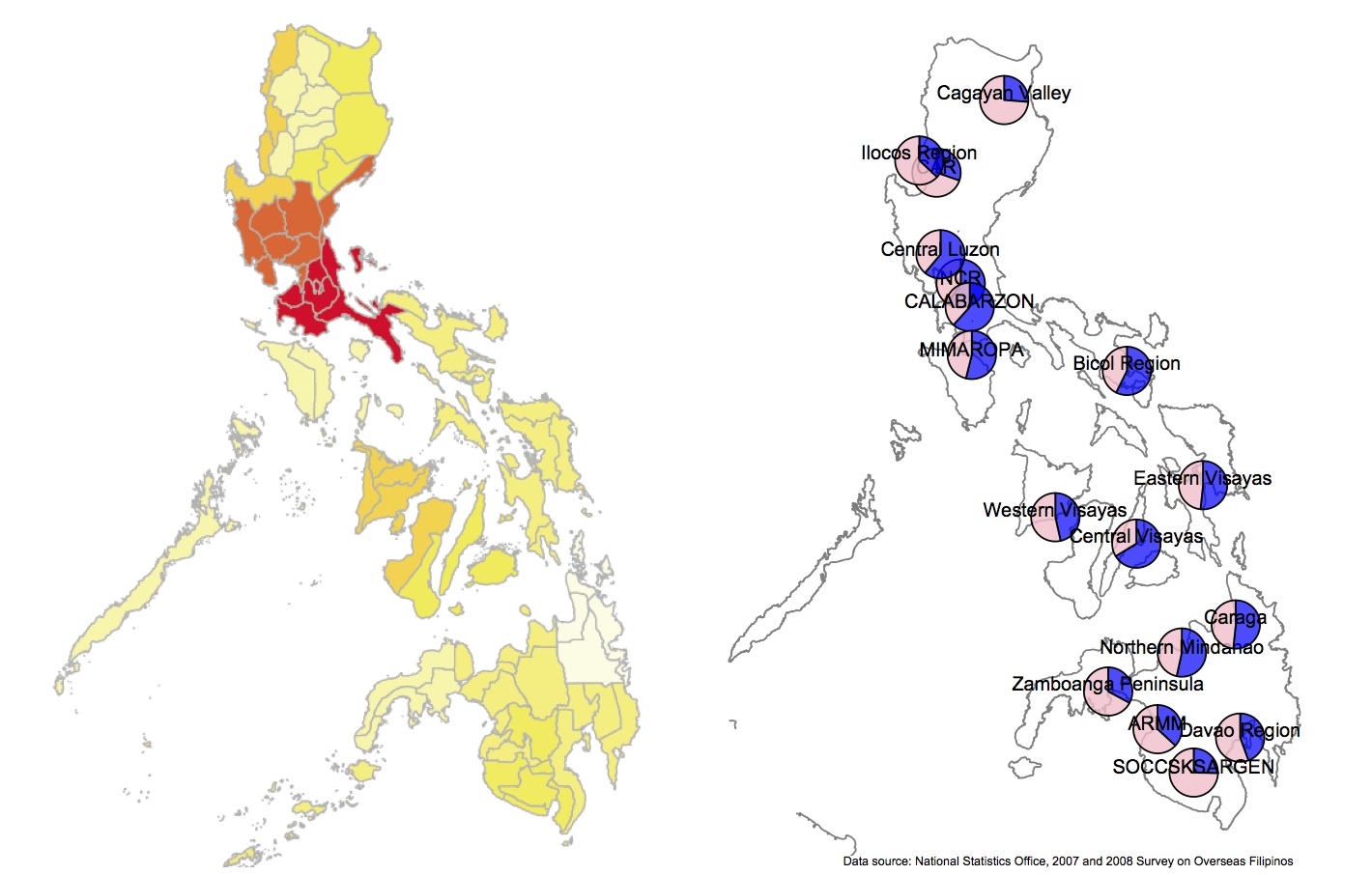Women from Luzon and Mindanao outnumber men who go abroad
Women from the northern and southern areas of the Philippines far outnumber men who go abroad for work, according to a report by the National Statistics Office (NSO).
Despite NSO's report that out of the 2.2 million overseas Filipino workers abroad, there are generally more male OFWs, a 2007 survey by the same agency meanwhile reported that there is a gender discrepancy in the northern and southernmost regions of the country.
This data was put into an infographic by fomer University of the Philippines (UP) assistant professor Erika Fille Legara. (Also seen below)

A 2007 survey by the NSO reported that there is a gender discrepancy in the northern and southernmost regions of the country. Infographic: Erika Fille Legara
In Legara's graphic, Cagayan Valley, Ilocos region, and CAR in the north are dominated by women. Zamboanga, ARMM, and SOCCSKSARGEN in the south have the same ratio.
Laborers and workers
In the factsheet of the 2007 survey, it was shown that fifty-eight out of 100 of these women work as laborers and unskilled workers overseas.
“Women from those places usually go abroad as household service workers,” explained DOLE Spokesperson Nicon Fameronag in a text message.
The gender discrepancy is still apparent in NSO's 2012 statistical tables on OFWs.
In the south SOCCSKSARGEN and ARMM still sees more women than men traveling abroad, while CAR, Cagayan, and Ilocos Region in the north retain the same divergence in gender.
The number of women who work abroad are still mostly laborers and unskilled workers, with jobs in the service and market sales sector a distant second.
From 2007 to 2012, countries in Western Asia are consistently the top destination for OFWs, with Saudi Arabia and the United Arab Emirates listed as having the highest volume of OFWs in the area.
Social Implications
While the economic benefits of migration may be great, the social cost it incurs has proven to be greater.
Authored in 2008 by Melanie Reyes of Miriam College, a review showed that children who are left behind by OFWs tend to long for parental care, as men are not seen performing the caring functions of mothers.
The United Nations Children's fund-sponsored paper also said that children left by migrant mothers are more prone to all sorts of abuse. They are also prone to feelings of abandonment similar to those felt by orphans and abandoned children.
The report even says that these children may even develop consumerist attitudes, as they can only see the “money equivalent” of migration, and associate their parents with money and gifts.
Commission of Filipino Overseas (CFO) Secretary Imelda Nicolas said support for these families should be included in any plans of the government regarding the situation of temporary migrants and their families.
In the 2013 preparatory roundtable discussion of the Economic and Social Commission for Asia and the Pacific (ESCAP) last May 30, Nicolas said that policies created to safeguard OFW welfare and protection should be gender sensitive.
She said that a sex-disaggregated database should be maintained for government intervention to be more focused, and for support to be provided for the OFW family. – KDM, GMA News
Comments